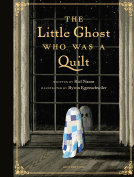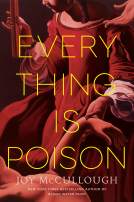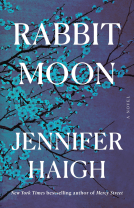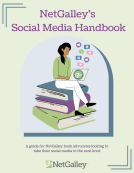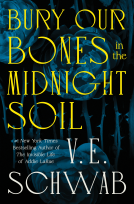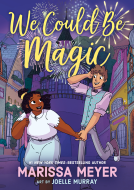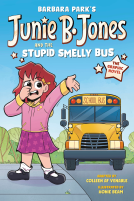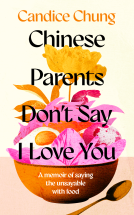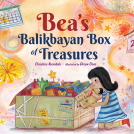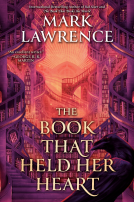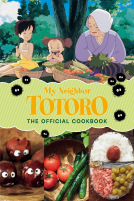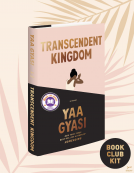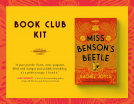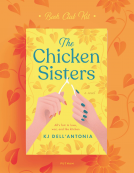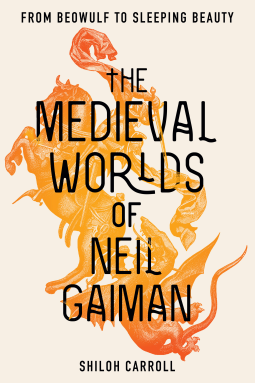
The Medieval Worlds of Neil Gaiman
From Beowulf to Sleeping Beauty
by Shiloh Carroll
This title was previously available on NetGalley and is now archived.
Send NetGalley books directly to your Kindle or Kindle app
1
To read on a Kindle or Kindle app, please add kindle@netgalley.com as an approved email address to receive files in your Amazon account. Click here for step-by-step instructions.
2
Also find your Kindle email address within your Amazon account, and enter it here.
Pub Date Sep 27 2023 | Archive Date Sep 27 2023
University of Iowa Press | University Of Iowa Press
Talking about this book? Use #TheMedievalWorldsofNeilGaiman #NetGalley. More hashtag tips!
Description
Readers love to sink into Gaiman’s medieval worlds—but what makes them “medieval”? Shiloh Carroll offers an introduction to the idea of medievalism, how the literature and culture of the Middle Ages have been reinterpreted and repurposed over the centuries, and how the layers of interpretation have impacted Gaiman’s own use of medieval material. She examines influences from Norse mythology and Beowulf to medieval romances and fairy tales in order to expand readers’ understanding and appreciation of Gaiman’s work, as well as the rest of the medievalist films, TV shows, and books that are so popular today.
Advance Praise
“Illuminating and provocative by turns, this book is a fascinating deep dive into Neil Gaiman’s many medieval inspirations, ranging from Old Norse myth to morality play to folktale. Carroll’s work inventively rereads well-known medieval texts alongside Gaiman’s eclectic and creative reimagining of them in comic, novel, short story, and film.”—Carolyne Larrington, author, The Norse Myths that Shape the Way We Think
“With clarity and humor, Carroll puts Neil Gaiman’s works in conversation with chronicle histories, dream-vision poetry, saints’ lives, folktales, and other medieval (and medievalist) texts, drawing out chains of influence and reinterpretation. Like Gaiman himself, this book is accessible to the medievalist, the speculative fiction fan, and everyone in between.”—Kavita Mudan Finn, author, The Last Plantagenet Consorts: Gender, Genre, and Historiography, 1440–1627
“An accessible survey of medieval influences across Gaiman’s work, imbued with Carroll’s humor and fresh voice. It provides historical and literary context for prominent themes and characters in Gaiman’s most famous stories, as well as analysis of lesser-studied works such as The Books of Magic and the 2007 film Beowulf.”—Tara Prescott-Johnson, author, Neil Gaiman in the 21st Century: Essays on the Novels, Children’s Stories, Online Writings, Comics and Other Works
Available Editions
| EDITION | Other Format |
| ISBN | 9781609389130 |
| PRICE | $27.50 (USD) |
| PAGES | 222 |
Links
Available on NetGalley
Featured Reviews
This book was well written and well researched, and a love for Gaiman's works shone through. The Stardust chapter was my favorite!
 Dan O, Bookseller
Dan O, Bookseller
My thanks to both NetGalley and the publisher University of Iowa Press for a advanced copy of this new book that looks at the influences and works cited by fabulist Neil Gaiman in his many works, but especially his run on the DC comics classic Sandman.
There have been many events that have changed the comic book industry, the Comics Code, the direct market debacle, even Watchman and The Dark Knight. Some ruined the industry for a time, some gave it heft that didn't appear till later, but outside of two men thinking of Superman, or Stan and Jack and many others creating the Fantastic Four, has anything affected comics as much as Sandman has. Watchman and The Dark Knight, were big, bold, but still dealt with men and women in dressed up tights, fighting crime. Sandman had larger themes, bigger ideas, and even better was a draw to those who had never, and would never have looked at a comic book before. Women entered comic book stores, and began to get interested, marginalised people could look at the Sandman and say, hey that's me. College professors could use it to teach, other artists could borrow ideas, and nerds like me could use it as a gateway drug to get people involved in comics. And look cool. Sandman probably kept DC going. Statues, T-shirts collections, Annotated collections, movie rights and more. Neil Gaiman had created a work that spoke to him, that drew on things he liked and wanted to share. And others followed. The Medieval Worlds of Neil Gaiman: From Beowulf to Sleeping Beauty by Shiloh Carroll is a look at Gaiman's use of medieval inspirations examining sources, tracing facts and pointing out story influences from not only Sandman, but Gaiman's other works as well.
The book begins with a character from the Sandman comic complaining about a Renaissance fair not getting the smells of the medieval times right. The character has been made immortal in a deal between Morpheus, the Lord of Dreams and his sister Death. This character knows the medieval world and it sure isn't what one sees in a weekend faire. From here the author describes some medieval ideas, and how Gaiman uses them before looking at the main work here. Sandman. The author follows the storyline, looking to the medieval sources that Gaiman used, giving examples, and correcter where necessary. The chapters follow the comic, the trip to hell, the fates and the furies, the crossover of other religions and mythology. Carroll also looks at other books by Gaiman, Neverwhere and Starlight, with more examples and comparisons.
A different look at Gaiman and his use of stories, history, myths and ideas to tell his tale, incorporating them into his dialogue, and the backstory of many of his creations. I have read the Annotated Sandman, which does a good job pointing out things, but this book does a better job comparing the basis of the information and how Gaiman uses it. I found most interesting that Gaiman kept drawing more and more as the series went on, drawing on the well of medieval knowledge to further his stories. The writing is good, not a lecture on paper, or a thesis for a degree, but a friendly kind of look at what Gaiman did here kind of telling. Helpful and educational without being dull or droll.
Great gift for Gaiman fans, and works as both a introduction to the works, and a guide for those familiar with the work. Very well written, and endlessly interesting.
 Reviewer 762493
Reviewer 762493
If you know your medieval literature and your Gaiman, there isn't much in Shiloh Carroll's book that will be new to you. That being said, "The Medieval Worlds of Neil Gaiman: From Beowulf to Sleeping Beauty" was a pleasure to read.
The chapters are structured around a combination of individual works and broader medievalist themes. It feels very intuitive when reading the book, as the conversation moves naturally from one topic to the next. Anyway:
- the Sandman gets three chapters (one to discuss morality plays, one to discuss dream visions, one to discuss Dante)
- The Books of Magic, Good Omens, Stardust, American Gods and Norse Mythology each get a chapter of their own
- another chapter is reserved for fable/fairy tale adaptations
- two chapters are dedicated to Beowulf: one for the movie adaptation, another one for two short form texts, "Bay Wolf" and "The Monarch of the Glen"
The author could have gone into more detail, I think, but it's interesting to see *so many* medieval influences on Gaiman's work in a single place. It really brings out how much of his work is based on medieval stories, transformed, modernized, reinterpreted - absorbed and then reused.
I also found it fascinating to read the chapter on the Beowulf movie, where the two scriptwriters had different perspectives: Gaiman wrote a story based on Beowulf and had fun with it, Avary thought there were plot holes in the source text and wanted to fix them, and the director didn't like the poem at all and wanted the story done otherwise. It really highlights one of the themes of Carroll's book: that medieval works are perceived and reused in all sorts of ways, with this and that element changed or reused.
 Kayla B, Bookseller
Kayla B, Bookseller
Thank you to NetGalley and the University of Iowa Press for providing me with an advanced copy in exchange for my honest review. The Medieval Worlds of Neil Gaiman is an excellent blend of academic prose and modern fantasy. It is obvious how much time, dedication and passion went into the writing of this book. I would highly recommend to anyone looking for a different lens to view Gaimen’s work or for anyone with an interest in Medievalism.
I have been a fan of Neil Gaiman for years, since an English teacher shared his short story A Study in Emerald with me. I was intrigued by this deep examination of the medieval influences on Gaiman’s works.
This is a very academic text, so at times it was very dry to read. But that didn’t lessen my enjoyment of this book. Carroll takes the time to explain the source of many of his medieval inspirations and how he transformed them, subverted them, or just used them to enhance his own writing.
More than anything, reading this made me want to revisit the works of Gaiman I’ve already read and loved, like The Sleeper and the Spindle and Stardust, but it also made me want to seek out his projects that I haven’t encountered before, like the Beowulf movie and his Sandman comics.
My thanks to NetGalley and University of Iowa Press for this advance reader’s copy!
. In accordance with FTC guidelines, please note in reviews that your ARC was provided by the publisher via Netgalley in exchange for an honest review.
Neil Gaiman is, without a doubt, my favorite author. Needless to say, I was super excited to be explore his worlds in details with an academic twist. The author explored his short stories, screen plays (Beowulf), and his more popular works, including the Sandman Series and my personal favorite, Stardust. Her insights were eye opening and made me think of the themes with a new mindset and gave me more insight to the perceived world of Medieval life.
 Tiffany L, Educator
Tiffany L, Educator
Short but clear and to the point. Carrol does exactly as they state they are going to do. I can certainly see why the selection was narrowed down due to the scope of Gaiman's work.
A good read for anyone interested in either subject.
Thank you NetGalley and publisher for the dARC of this work in exchange for my honest review.
Readers who liked this book also liked:
Christine Alemshah
Children's Fiction, Multicultural Interest, Parenting & Families
Created by Hayao Miyazaki
Arts & Photography, Comics, Graphic Novels, Manga, Cooking, Food & Wine
